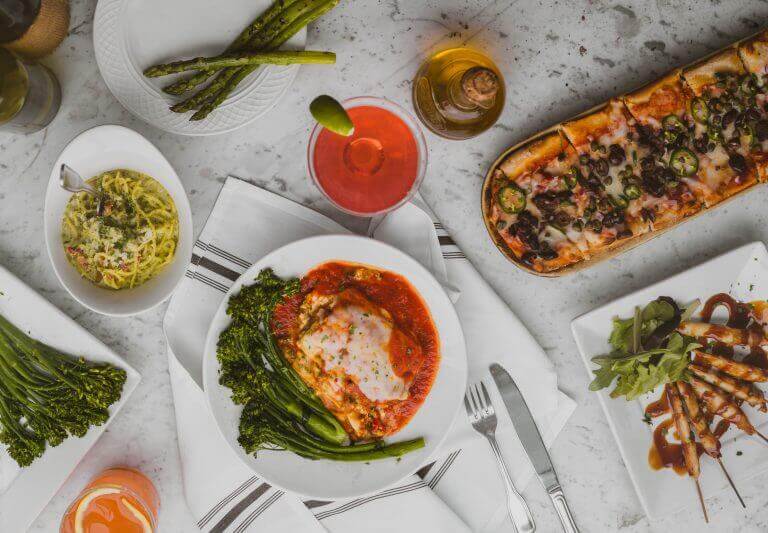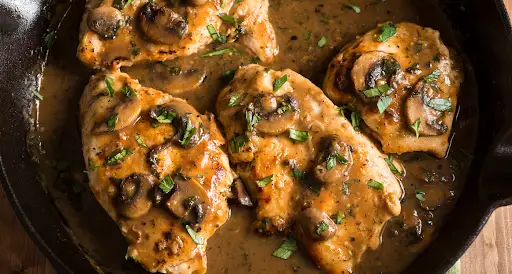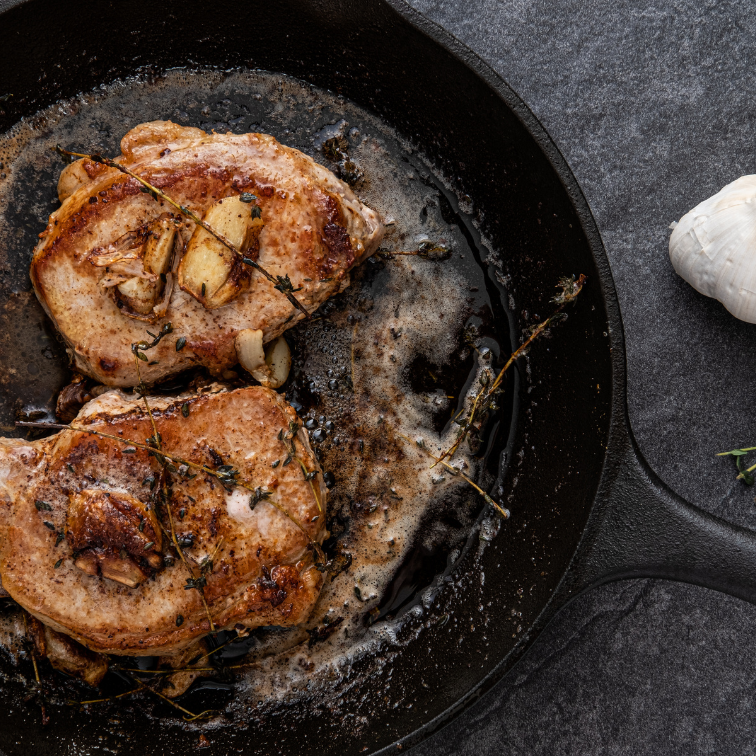
Hope you’ve saved some room! You’ve made it through the Antipasto and Primo, but don’t worry, you’re not finished eating yet. We’ve now moved on to Secondi, or, the second-course, resembling what we would consider the main course.
As a serving of meat or fish, these dishes tend to come in smaller portions and are fairly simple, perfectly complementing the other parts of the meal. Traditionally, the most commonly served Secondi dishes consist of veal, pork, and chicken. More recently, the popularity of beef and fish continues to rise as well.
A very famous Italian secondi dish is Pollo Alla Cacciatora. This simple recipe consists of chicken that is pan-fried and then stewed with tomatoes and bell peppers. It gets an extra boost of flavor from rosemary, garlic and wine. If you’ve never tried this classic, get right on it. It’s pretty easy to make at home, too!
For a pork option, you might lean towards a serving of Porchetta (pore-KET-ah). Porchetta is a classic Italian recipe for boneless pork shoulder, stuffed with sausage and wrapped in — yes you guessed it — more roasted pork! Can’t go wrong there!
Lastly, we’ll give you a favorite Italian veal dish as well. We just can’t resist!. Vitello ai Funghi is an extravagant serving consisting of grilled veal scallops with your choice of either a wild mushroom or lemon sauce. Which sounds best to you?
If you’re looking to find a vegetarian serving you’ll likely see Melanzane Alla Parmigiana on the menu. Though it’s meat-free, it’s quite an elegant dish. Be sure to use the freshest eggplant you can find and let this vegetable be the star of the show.
Hungry yet? We are too. But here’s another helpful tip for the next time you’re reading an Italian menu. Along with all the mouthwatering options, you’ll also notice a pattern in the way Secondo dishes are name. Reading the name, you’ll learn a lot about the dish: which protein is being used, and the way in which the protein was cooked. It may also include the cut of the meat being used.
Stay tuned for more on this series, and in case you missed our previous articles…








